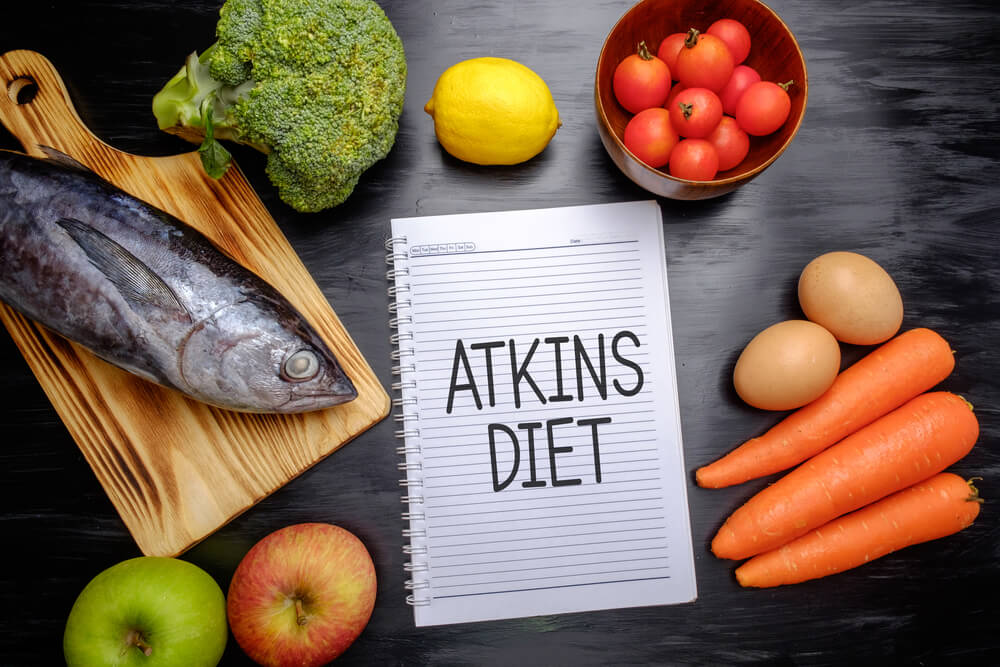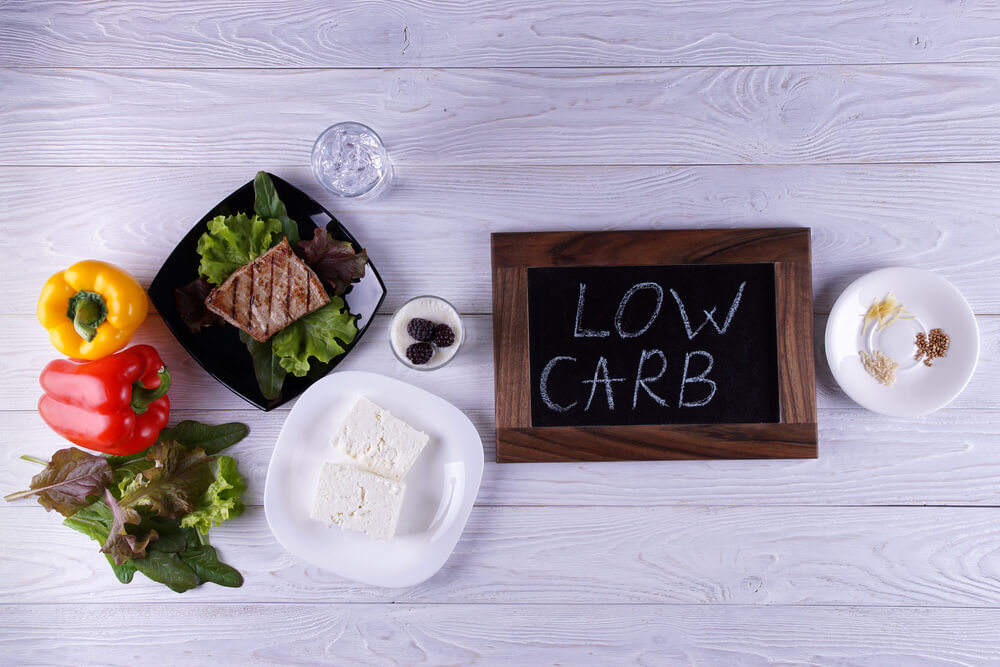
There are plenty of weight loss programs out there, but the Atkins Diet is certainly one of the most popular. Even so, many people don’t know what, exactly, it is.
It’s undergone many changes since it first arrived in the 1960’s—having been introduced by a cardiologist, Robert Atkins, M.D. Current iterations of the program are keto-centric, but the program’s many variations make it both incredibly flexible and effective for dieters of all types.
Setting Health Goals: An Intro to the Atkins Diet
More Than a Weight Loss Diet

The current Atkins diet lets dieters choose between several ‘eating styles,’ which is why the program has become critically acclaimed: Even those with little dieting experience can use it to get healthier—even transitioning into a full-fledged keto lifestyle.
As the world’s most widely recognized low-carb diet plan, the Atkins Diet focuses on limiting carbohydrates while further balancing other nutrients. Dieters are advised to make the most out of other nutritious foods like fiber-rich carbs and healthy frats.
Protein, too, is on the menu: Beef, poultry, and seafood are Atkins Diet favorites among many.
Even though the Atkins diet was originally created to aid weight loss, its health benefits have unfolded over the years. Some utilize the program to control blood glucose levels, reduce blood pressure and contribute to long-term metabolic health. Each of these things, ultimately, stems from carbohydrate intake control.
Specifically, dieters take great care in counting their carbohydrates down to the last gram—then subtracting any grams attributed to fiber, glycerin, and sugar alcohols.
The Atkins Diet’s use as more than a simple weight loss diet stems from its different ‘brackets’ of application. While a lot of Atkins Diet variations exist, even its core three offer plenty of flexibility for pursuing long-term goals.
These three brackets are determined by their overall levels of net carb intake, daily. While each can be successfully completed by dieters of all experience, it’s still a good idea to contact your healthcare provider before pursuing the Adkins Diet in general.
So, how do these three tiers work? Let’s check them out.
The Atkins 20

The Atkins 20 plan stems from the original Atkins Diet—designed for those looking to lose over 40 pounds. It’s also applicable to those with a waist size of over 35, for women, or over 40, for men. The Atkins 20 diet was also originally geared towards the pre-diabetic and diabetic—and it’s still applied as such, today.
Those pursuing the Atkins 20 diet plan must consume as little as 20 net carbs per day. This is done by adhering to a strict list of pre-approved, foundational foods spanning across lean meats, vegetables, healthy fats, and cheese.
The foods, themselves, serve to replace the typical energy unhealthy carbs had provided—allowing dieters to remain healthy and active while moving forward.
After spending two weeks on the Atkins 20 plan, dieters are allowed to add nuts, berries, and other fiber-rich carbohydrate sources into their plan. Carbs are increased in five-net-carb increments, gradually opening the diet up to allow other healthy carbs as an entire replacement program.
The best way to get a grasp on the Atkins Diet, in general, is to look at the extended breakdown of the Atkins 20 plan—as its structure also adheres to the other Atkins Diet tiers: The Atkins 40 and the Atkins 100.
The first phase is called the Induction Phase—which lasts for at least two weeks.
During this period, the dieter must maintain the above-mentioned low-carb limit. After passing the Induction Phase, they enter the Balancing Phase—wherein grams of net carbs are slowly introduced to gauge the perfect nutritional balance.
Following this, the Fine-Tuning Phase serves as a ‘fine adjustment’ phase: The dieter continues making incremental adjustments until reaching a monthly goal. Finally, there is the Lifetime Maintenance phase. This involves long-term diet maintenance, so as to solidify good habits and healthy eating patterns. Naturally, the Lifetime Maintenance phase adheres to the diet’s overall low-carb foundation.
The Atkins 40
The Atkins 40 is a bit more relaxed than the Atkins 20, making it much more approachable by those who might’ve dieted before—but who haven’t pursued a strict regimen. The Atkins 40 allows dieters to eat foods from each food group at the start, taking extra time to comfortably narrow down unhealthy dietary components.
The Atkins 40 is meant for those with under 40 pounds of fat to lose—but it’s generally approached by any who prefer a less restrictive diet than the Atkins 20. The Atkins 40 is also a less stressful dieting regimen for those with preexisting health conditions—as well as nursing mothers.
The Atkins 40 regimen begins with a starting phase limited to under 40 grams of carbohydrates. Similar to Atkins 20, these carbs should be derived from healthy sources, such as nuts, fruits, vegetables, whole grains, and legumes.
At the dieter approaches their initial weight goal, they can increase their overall carbohydrate ‘count’ in 10 net carb increments. The remainder of the Atkins 40 diet follows the same phases as the Atkins 20 diet, eventually transitioning into a long-term health plan.
The Atkins 100

Finally, there is the Atkins 100: The most lenient of the trio. The Atkins 100 is designed for those keen on maintaining their current weight—but who also aim for a healthier lifestyle, in general. This version of the Atkins Diet supports the widest range of food choices, making it incredibly approachable by most dieters—experienced or not.
The Atkins 100 plan allows a 100-gram carbohydrate limit, daily. No foods are off-limits, and the program progresses at the dieter’s chosen pace—as, ideally, weight remains unchanged.
Carbohydrates are typically separated evenly between three meals and two snacks per day, so as to keep blood sugar levels constant.
For this reason, the Atkins 100 plan is a chosen diet for those with health concerns—but who don’t necessarily need to lose extra weight.
Fact and Fiction: Does Atkins Diet Work?

Because the Atkins Diet is so popular, it’s understandably encountered a lot of scrutiny over the years. While some promote it as a great diet to promote male muscle growth, others suggest it may be unhealthy for those who need to maintain steady blood sugar levels—as self-regulated blood sugar maintenance, in any regard, can be dangerous if not conducted with care.
So, where does the Atkins Diet stand, these days?
By and large, it’s still one of the best-known, well-supported low-carb diets. It’s also a common foundation for keto diets—and research does support its effectiveness. At its core, the diet simply weeds out unhealthy, processed carbs like pasta, bread, cereals, and other sugars.
It’s a great way to jump-start any long-term weight loss plan—and it’s relatively approachable for dieters of all experience levels.
This said the Atkins 20 plan might be too difficult for some. Its initial food choice, highly limiting, may be overwhelming for those who’re incredibly used to high-carb routines.
Who Benefits the Most?
As with other diets, the Atkins Diet benefits some more than others. Primarily, the Atkins Diet is designed for those looking to shed higher amounts of fat without sacrificing rich proteins. Because the diet allows the consumption of high-fat animal protein, it’s also a great alternative to plant-based weight loss regimens which may be unhealthy for some.
The Atkins Diet is also suggested for those seeking heart-healthy solutions. This said those with a history of kidney disease, heart disease, diabetes, or high cholesterol should still talk with their medical provider before pursuing the Atkins Diet.
This is because the diet revolves around the consistent balance of fat, carbs, and proteins—and an imbalance may be harmful to those with underlying conditions.
Long-Term Health with the Adkins Diet

The best thing about the Adkins Diet, easily, is its rigid structure. While this may be a barrier of entry for some, it tends to pay off in the end as a long-term framework for better health.
This is especially true for those who work up to the Adkins 20, as opposed to starting with it. The long-term discipline fostered along the way, in most cases, assists with the discipline needed to keep portions small—and net carbohydrate counts smaller.
The Adkins Diet doesn’t cost anything to approach, and plenty of in-depth information about the Adkins 20, 40, and 100 exists to help new dieters get started. These days, smartphone apps help Adkins Diet newcomers get on track quickly—even connecting them with healthcare providers along the way. Other digital resources, such as smart-device heartrate monitors, further aid the pursuit of a thinner waistline with the Adkins Diet.
And, at the end of the day, few things help with a new dieting regimen like a supportive community. You can follow Atkins by reading some of the program’s e-books, but you can also make use of the Adkins website’s chat rooms, support groups, and forums.
There, you can meet others pursuing the same goals as yourself. You can also discover new recipes, meal tracker apps, carbohydrate planners, and even new places to shop for food.
If you’re keen on losing weight, seek a healthier lifestyle, and want a great challenge—the Atkins Diet is a great program to follow. Talk with your health provider today, and ask them what they think about the Atkins Diet.
Conclusion
They can help you determine the best tier to approach, and they can assist with any long-term concerns you may have concerning your plan’s longevity. If you stick to the Adkins Diet, you’ll find yourself much healthier, thinner, and happier: The true goals of any health pursuit.
So, where will your own Atkins Diet adventure take you in the future?
-Terry Asher
Terry Asher
Latest posts by Terry Asher (see all)
- Better Family – Product Review Liquid Daily 2 oz - Dec 16, 2024
- Post-Workout Recovery: The Key to Optimal Performance - Nov 25, 2024
- Pre-Workout Supplements – Everything You Need To Know - Nov 18, 2024












[…] Source link […]
[…] This article was originally published by Gymjunkies.com. Read the original article here. […]
[…] Read The Entire Article By Terry Asher Here. […]
[…] Source link […]
[…] loss plans like the Atkins Diet succeed because they focus on food portion control. Expending more calories than you consume is […]
[…] loss plans like the Atkins Diet succeed because they focus on food portion control. Expending more calories than you consume is […]
[…] loss plans like the Atkins Diet succeed because they focus on food portion control. Expending more calories than you consume is […]
[…] loss plans like the Atkins Diet succeed because they focus on food portion control. Expending more calories than you consume is […]
[…] loss plans like the Atkins Diet succeed because they focus on food portion control. Expending more calories than you consume is […]
[…] to ensure you are making progress you have to be honest with yourself, and judge how your diet is affecting […]
[…] to ensure you are making progress you have to be honest with yourself, and judge how your diet is affecting […]